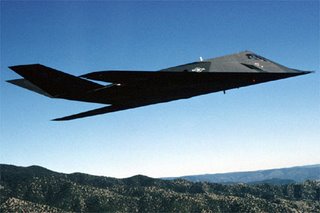
STENNIS SPACE CENTER, Miss. An Army Reserve CH-47D, assigned to the 159th Aviation Regiment based in Fort Eustis, Va., hovers over an 11-meter rigid-hull inflatable boat (RHIB) during a maritime external air transportation system along the Pearl River in Mississippi. (U.S. Navy photo by Mass Communication Specialist 3rd Class Robyn Gerstenslager)
The list below is copyright 2008 by Teak Publishing and may not be reproduced or redistributed in any format without the permission of the author. Sites may link freely to this blog article without permission.Would you like to monitor some US Army Aviation HF communications? Here is a sample list of recently reported frequencies.
US Army Aviation Frequencies (kHz):3286.5 Aviation CONUS Net ALE/USB
4032.5 Aviation CONUS Net ALE/USB
4073.0 Aviation Overseas ALE/USB
4443.5 Aviation/National Guard CONUS Net ALE/USB
4446.5 2-3 AVN ALE/USB
4451.0 3-227 AVN ALE/USB
4521.5 Aviation CONUS Net ALE/USB
4611.5 Aviation CONUS Net ALE/USB
4790.0 1-171 AVN Net ALE/USB
5101.0 Aviation Overseas ALE/USB
5118.0 Aviation Overseas ALE/USB
5135.0 Aviation Overseas ALE/USB
5296.5 Aviation Overseas ALE/USB
5310.0 South Flight Following Facility Soto Cano AB, Honduras ALE/USB
5337.0 Aviation ALE/USB
5500.0 Task Force Talon Afghanistan HF ALE Net ALE/USB
5542.0 Aviation Overseas ALE/USB
5554.5 Aviation Net ALE/USB
5602.0 Aviation Overseas ALE/USB
5662.7 Serbia Net ALE/USB
5666.0 Aviation Net ALE/USB
5750.0 1-227 AVN ALE/USB
5881.5 5-159 AVN Company B ALE/USB
6486.0 Aviation Overseas ALE/USB
6560.0 Task Force Talon Afghanistan HF ALE Net ALE/USB
6751.0 Aviation Net ALE/USB
6906.0 Aviation Overseas ALE/USB
6908.5 Aviation CONUS Net ALE/USB
6911.5 Aviation CONUS Net ALE/USB
7003.0 European (Kosovo) Aviation Net ALE/US
7632.0 Aviation CONUS Net ALE/USB
7650.0 Army/National Guard Aviation CONUS Net ALE/USB
7667.5 Aviation CONUS Net ALE/USB
7718.5 Army/National Guard Aviation CONUS Net ALE/USB
7819.0 Army/National Guard Aviation CONUS Net ALE/USB
7839.0 Aviation Overseas ALE/USB
8000.0 Aviation Net ALE/USB
8003.0 Aviation Net ALE/USB
8050.0 Fort Campbell/Sabre AAF KY ALE/USB
Fort Bragg NC SOAR/JSOC ALE/USB
8056.0 Aviation Net ALE/USB
8057.0 Ohio National Guard/Air National Guard Aviation Net ALE/USB
8065.0 National Guard Aviation/US Army Flight Following Service (AFFS) ALE/USB
8101.5 Aviation Overseas ALE/USB
8161.5 12th AVN CONUS Net ALE/USB
8171.5 National Guard Bureau Aviation CONUS Net ALE/USB
8181.5 Army/National Guard Aviation CONUS Net ALE/USB
8183.0 National Guard Aviation CONUS Net ALE/USB
8184.5 Army/National Guard Aviation CONUS Net [also Dust Off Net] ALE/USB
8714.0 Aviation Overseas ALE/USB
8950.5 Aviation Overseas ALE/USB
8972.0 Aviation Net WAROPS (1/228th Avn Regt ("Winged Warriors") Operations-Soto Cano AB, Honduras ALE/USB
9013.3 European Aviation Net ALE/USB
9081.5 Army/National Guard Aviation Net CONUS ALE/USB
9190.0 Task Force Talon Afghanistan HF ALE Net ALE/USB
9295.0 Army/National Guard Aviation CONUS Net ALE/USB
10670.5 Aviation CONUS Net ALE/USB
10680.0 Aviation CONUS Net ALE/USB
10691.5 Aviation CONUS Net ALE/USB
10692.5 Aviation Net WAROPS (1/228th Avn Regt ("Winged Warriors") Operations-Soto Cano AB, Honduras ALE/USB
10821.0 Aviation CONUS Net ALE/USB
11047.6 Aviation Overseas ALE/USB
11067.0 Aviation Overseas ALE/USB
11170.5 Aviation CONUS Net ALE/USB
11439.5 Army/National Guard Aviation CONUS Net ALE/USB
11441.0 National Guard Aviation CONUS Net ALE/USB
11551.5 Army/National Guard Aviation CONUS Net ALE/USB
11575.0 Army HF Apache Net ALE/USB
11628.5 Aviation Net WAROPS (1/228th Avn Regt ("Winged Warriors") Operations-Soto Cano AB, Honduras ALE/USB
11630.0 Aviation Net (3rd ID Combat Aviation Brigade=T3CAB) ALE/USB
12168.0 Aviation CONUS Net ALE/USB
And for CH-47 helo fans here are some of the Automatic Link Establishment (ALE) addresses seen on some of the frequencies listed above:
D24367
G00079 G00081 G00088 G00265 G00298 G24165
R00082 R00106 R00130 R00155 R00156 R00167 R00170 R00171 R00174 R00176 R00177 R00189
R00193 R00205 R00235 R00240 R00241 R00250 R00280 R00286 R00293 R00305 R00367 R01647 R01651 R01661 R01671 R10240 R24167 R24323 R24324 R24353 R24354
Blog note: I plan to have a more detailed list of US Army HF nets in a future issue of Monitoring Times magazine. It will appear in my monthly Milcom column. So remember if you miss an issue of MT, you miss alot.






















